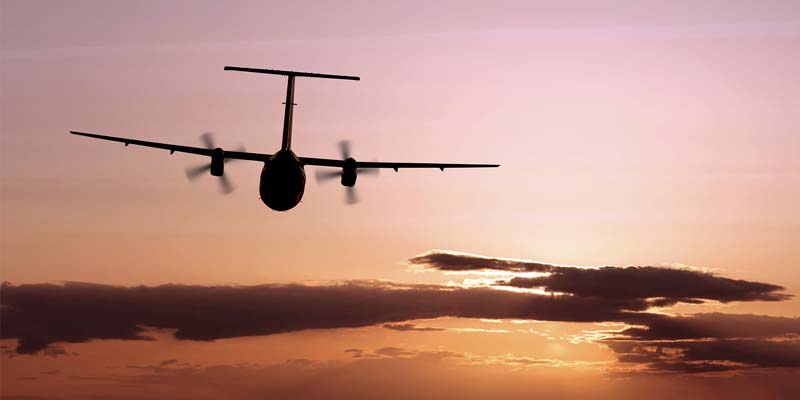A Passion for Aviation
Aviation has been a passion of mine since I was a child. Growing up, I built countless plastic model airplanes and hung them with fishing line from my bedroom ceiling. My favorite was a model of an F-15 Eagle, in my opinion the Air Force’s best fighter jet, holding all sorts of speed, altitude and time to climb records. As a teenager, I also got into fuel powered remote control planes, starting with control-line models which we flew at a baseball field on the weekends and then scale remote control model airplanes flown at a club field with its own miniature runway. These were balsa wood models with a monokote plastic covering on the wings. Building them helped me appreciate the construction of an airplane, basic engineering principles such as center of gravity, and all how they relate to the principles of flight: thrust, drag, lift and weight.
As I continued to mature, there was no question that I would eventually end up in a real airplane. During a summer while I was in college, I was working a construction job and made enough money to pay for flight lessons. I enrolled at a Cessna Pilot Center at Pompano Airpark and began my quest for a private pilot license. I was very motivated, flying 2 to 3 times a week and, after 6 weeks, passed the FAA written exam and took a checkride with an FAA examiner, becoming a licensed private pilot of a single engine airplane. My flight instructor was Patrick Olarte, then a DC-9 pilot, who always wore a pilot’s uniform consisting of black pants, black shoes and a white shirt with captain’s epaulets on his shoulders. He instilled in me many good habits which I follow to this day.
My first passenger was Michelle Wilson, a high school pal who was adventurous enough to get in an airplane with me and experience what it was like to fly in a small plane. I kept up my flying skills by renting aircraft while at the University of Florida in Gainesville. I would take short trips with my friends from Gainesville airport to no particular destination. Becoming bored with these trips, I realized how much I enjoyed flight training and decided to embark on the next step which was an instrument rating in a single engine airplane. Learning to fly solely by reference to instruments was very challenging. I spent a lot of time in a simulator trying to learn how to interpret what the instruments were telling me absent any outside visual reference. Once in the airplane, it was difficult to ignore the physiological sensations and reconcile them with the information the instruments were relaying. Many times my body felt like the airplane was climbing, when we were actually in level flight performing a steep turn. The G-forces were disorienting, so it was important to learn to ignore feelings and rely only on the instruments. The training paid off and I obtained an FAA instrument rating, giving me much more confidence and comfort when flying in the clouds or questionable weather.
I continued to fly and enjoyed additional training, culminating in a commercial multi-engine instrument license. In English, this means I could get paid to fly passengers in a twin engine airplane and was qualified to fly solely by reference to instruments. Over the years, I have owned several single and twin engine aircraft. I experienced the ups and downs of ownership including unscheduled maintenance events. Owning an aircraft is terrific because it gives you tremendous freedom to travel, but can also be expensive, especially if you experience a serious mechanical hiccup. I really enjoyed flying to vacation destinations with my family throughout Florida and the Bahamas as our kids were growing up. On a Friday afternoon, we could get in our plane at Palm Beach International Airport and 1 ½ hours later find ourselves 175 nautical miles to the east, snorkeling at Bahamian out-island. The kids grew up quickly, work got busier and I flew less frequently. It has been 8 years since I have owned an airplane. Fortunately, I have been able to rent airplanes for pleasure and work.
I recently had to meet with a doctor in Venice, Florida, a 4 ½ hour drive from West Palm Beach. Instead, I determined that the doctor’s office was within a few blocks of Venice Municipal Airport. I rented a Cessna 182, a single engine 4 seat plane at North County Airport and in just a little over an hour later I was taxiing onto the ramp of Venice’s airport. Just a quick taxi ride later, I was meeting with the doctor. I was back in West Palm Beach in time for lunch and was able to resume my day and be productive without spending most of the day in my car.
Being a pilot has also been helpful for me and my clients involved in tragic aviation accidents. Most lawyers who work on aviation cases are pilots and most are very passionate about aviation. Many have professional and military aviation backgrounds. It is a very specialized area of the law, so it is very important to speak the language and be conversant with experts in all technological aspects of aviation. Aviation tragedies are very sad: occupants usually don’t survive and families are left to grieve and cope with tremendous losses. It gives me satisfaction to help families through a very emotional event, helping them understand the often complex reasons why an aviation accident occurred. And I am fortunate to work with a great group of lawyers, among them Chris Speed, also a pilot, and others who have handled a variety of aviation matters over the years.
Over the years, it has been rewarding to combine my profession with my long-time passion for aviation.
Share This



